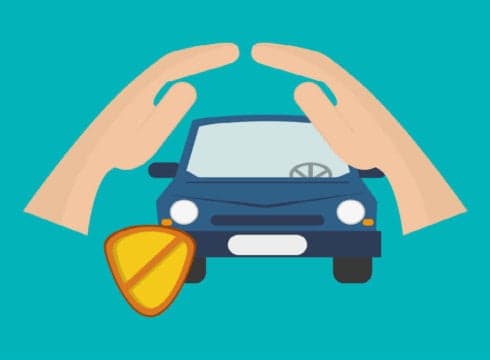Practical Applications of IoT in Auto Insurance
Inc42 Daily Brief
Stay Ahead With Daily News & Analysis on India’s Tech & Startup Economy
Automobile Insurance as an industry works on traditional methods. These methods are tried, tested and used by multiple insurers. They eventually get the same result – Time-consuming claim settlement process and fraudulent claims! Low levels of accuracy and manual processes are the main culprits for an automobile insurer. In this article let’s understand how IoT will transform Auto Insurance Industry for the better.
What Is the Buzz Surrounding IoT?
With the innovation of a new Internet protocol: IPv6, a breakthrough technology called the Internet of Things (IoT) was conceptualized. With IoT, it is possible to make physical objects deliver data. This data can be used to access information related to that object. Let’s understand the concept of IoT with simple examples.
With the help of an IoT device embedded in a chair, one can remotely know if the chair is occupied or find out a free space in the parking lot before entering the premises. Based on these simple examples, one can contemplate the applications of this technology on a large scale.
Irrespective of an industry, IoT can be used to its full potential for accessing real-time information, understanding risks and taking preventative measures. Due to highly innovative nature and customised applications, in almost every industry, IoT has created a huge buzz around the globe.
How Will IoT Transform the Auto Insurance Industry
Considering the practical uses of IoT, this technology is expected to transform the entire Auto Insurance Industry. Over the past centuries, an insurance policy was designed with the focus being on the car rather than the customer as the risk profile of a driver could not be determined accurately.
With advancements in the insurance industry and a positive shift in customers’ demands, the technology of the Internet of things is expected to rule this industry.
IoT for Insurers
Insurance as a business is an age-old tradition. Insurers provide a vast array of insurance products, through which consumers can financially safeguard their assets. The process of insurance, right from creating an insurance policy to post sales and services, has not seen any kind of drastic change until now.
With the help of, much appreciated, IoT the age-old methods followed in the insurance industry will witness a positive change. Insurers can create accurate products, as discussed earlier, better manage pre and post sales services and can simultaneously mitigate risks.
IoT for Consumers
IoT device embedded in a vehicle will provide information about the driving patterns to an insurer. Constraints such as, average speed at which this vehicle is driven or usage of breaks will help in determining the risk profile of a driver.
Based on the risk profile, an insurer can deduce the cost of an insurance policy. This cost would be much more accurate and fair to the driver, as opposed to charging a generalised price which is currently in use. This will result in higher customer satisfaction as a safe driver will have to pay a reduced cost as compared to a customer with a history of repeated claims.
Practical Applications of IoT in Auto Insurance
Internet of Things has colossal applications in the field of Auto Insurance. To narrow it down, let’s understand how a claim cycle, embedded with IoT, will function:
Occurrence of a Peril: Accident
An IoT device embedded in a vehicle will provide real-time data to the insurer as well as the customer. Data regarding the state of various parts, detection of a failure, warning signs like speed warnings or proximity levels, will be provided. This data will help in reducing the chances of accidents to a great extent.
Roadside Assistance and Emergency Services
In case, an accident occurs in spite of the above-mentioned warnings, IoT devices will report the incident to the insurer. This report will be forwarded to the nearest service provider. In-turn drastically decreasing the reach time of roadside assistance service and emergency facilities at the accident spot.
Inspection and Report
As opposed to traditional inspectors visiting the garage for creating an inspection report, drones can be programmed to identify the damage. Reports about the current state of parts and real-time cost of replacing them can be derived with the help of multiple IoT devices and drones. This will speed up the process of inspection and at the same time provide highly accurate reports to the insurer.
Damage Repair
Customers can track the status of repairs and understand the time required to receive their repaired vehicle. Based on this, customers can also estimate the magnitude of damage and approximate claim amount that their insurer is likely to settle.
Fraud Detection
General Insurance Companies in India detect around 6% of fraudulent claims in one year, resulting in a loss of $25 to $30 billion when compared to an international range of 10-15%. IoT devices have potential to drag this number downwards. With respect to auto insurance, insurers will already be aware of the state of an automobile and its parts. It will be possible to differentiate old and current damages, thus making it possible to process a claim for current damages.
Future Approach
Internet of Things is providing a golden opportunity to Insurance Companies in both Life and General Insurance sector. Insurers across the globe should adapt to this change and integrate IoT in their business models. IoT is providing a win-win situation for insurers as well as the consumers with fair, faster process and real-time data.
{{#name}}{{name}}{{/name}}{{^name}}-{{/name}}
{{#description}}{{description}}...{{/description}}{{^description}}-{{/description}}
Note: We at Inc42 take our ethics very seriously. More information about it can be found here.


